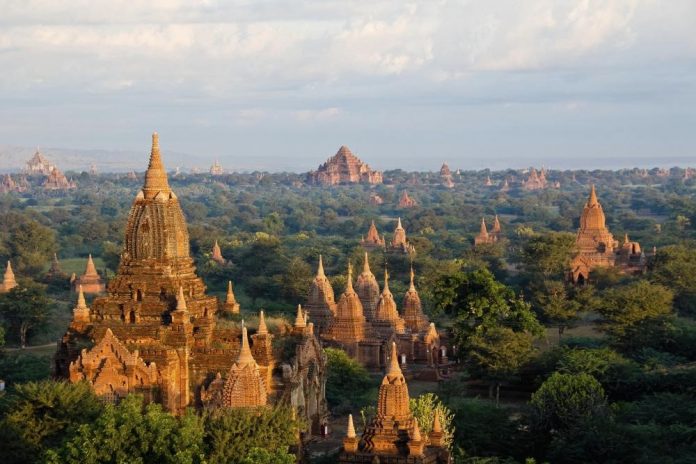Myanmar (formerly known as Burma) has a rich history of great, turbulent and tragic times which has been very complicated. If you wish to visit this amazing country by availing lucrative Myanmar tour packages, the very first thing that you need to know is the ancient roots of Myanmar. To get more out of your trip, it is important to know about the historic significance of this scintillating country.
Let’s take you to the prehistoric period of Myanmar tour where it was believed that humans lived in this area that is currently occupied by contemporary Myanmar since 75,000 BC. However, the first settlements are known to be established at least 13,000 years ago.
It was approximately in 1,500 BC when it was believed that Myanmar people were the first ones to commence making bronze, farm rice and domesticate animals. About 2,500 years ago, this place became a central link in the trade route between the Middle East, India and China.
The Pyu were considered to be the first documented inhabitants of contemporary Myanmar. They were the first who resided in the Irrawaddy valley in the 2nd century BC. These people migrated South from contemporary Yunnan in China.
These Tibeto-Burman-speaking people established 12 walled cities that include five significant city-states and several smaller towns and cities across central Myanmar. These five cities were Binnaka, Maingmaw, Sri Ksetra, Halin and Beikthano.
It had a peaceful civilization that flourished in Myanmar. This had lot of effect on later civilizations and we can see the glimpses of this legacy in the Burmese culture even today. In the 6th century, Mon people started to migrate to lower Myanmar from the kingdoms of Dvaravati and Haribhunjaya. When the Pyu millennium ended in the 9th century, the Mon had at least two small but prosperous kingdoms at Thaton and Pegu.

The Pyu civilization collapsed in the 9th century when Bamar raiders from the Kingdom of Nanzhao (now Yunnan) invaded Myanmar along with Pagan. This settlement resulted in the formation of the Pagan empire which ruled Myanmar for roughly four hundred years. Eventually the Pyu civilization was taken over by Pagan empire.
Pagan gradually expanded itself for 200 years before it came to the golden age when the great King Anawrahta came into rule in 1044. He loved during religious and socio-economic reforms and so he immediately commenced constructing the Pagan empire. This united the regions that now has become a part of their existing religion. This was the first time that it came into existence. These reforms included the introduction of Buddhism to upper Myanmar, which was a significant development in the history of the country.
When the 12th century arrived, the Pagan Empire was equal to the Khmer empire when it came to power and scale. Between the 11th and 13th centuries, most of the wealth of the kingdom’s empire was spent on building more than 10,000 Buddhist temples located on the plains of Bagan. Several of them still exist, which is considered to be one of the most important archeological sites.
However, this growth of religious wealth led to the downfall of the empire. It was quite challenging to control the religious assets, which resulted in instability and weakened the empire leading to the threat of invasion from Mongols, Shans and Mons.
It was in the early 13th century when Shans from the north and South were invading the Pagan empire. While the Mongols had defeated Yunnan and were setting their eyes on new targets. In the year 1287, they sacked Pagan which ended the 250-year long golden era of the empire. This resulted in Myanmar being marked by petty kingdoms and wars.
Final Words
These were some of the historical snippets of Myanmar. After learning about the history of the country, we surely hope that you would love to know more about this beautiful place. If you are curious to learn more about this picturesque destination, embark on a Myanmar tour from a reputed travel agency and make your holidays an excellent time to explore about this wonderful country that is rich in culture and historical significance. So, when do you plan to visit Myanmar?








